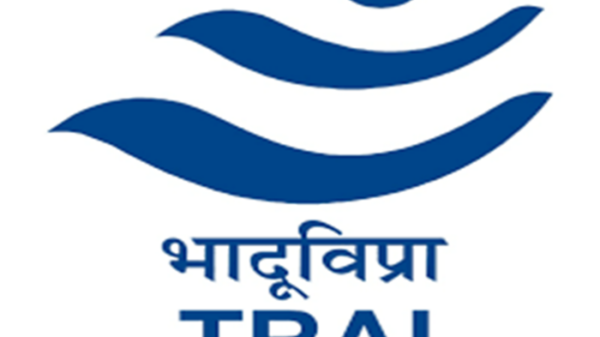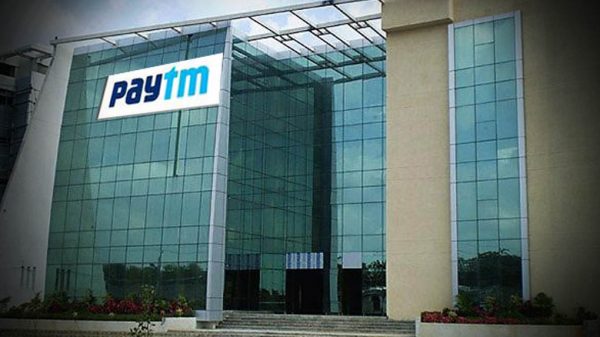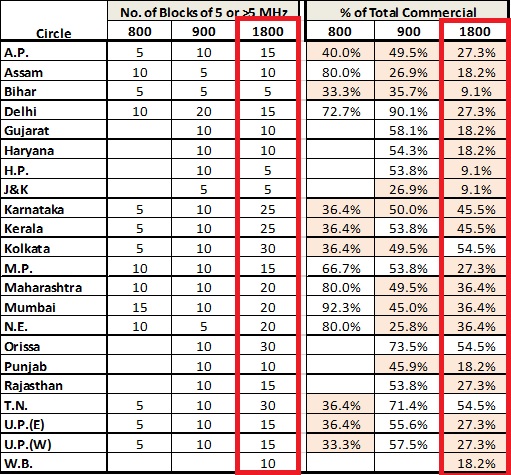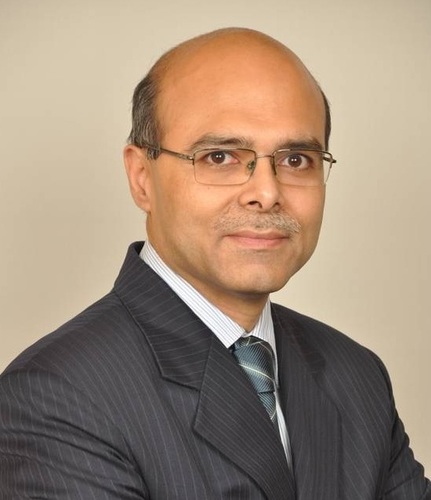By Parag Kar
The Current Situation
The 1800 MHz band has the more spectrum of all the FDD bands. Worldwide, it is the most popular band for LTE and has the best economies of scale for enabling cheaper and affordable devices. In India of the total 75 MHz, 55 MHz is earmarked for commercial use. However, a fraction of the 55 MHz block is in chunks of 5 MHz and hence most of the spectrum is unsuitable for LTE. See table below.
For example in Bihar, HP, J&K only 5 MHz is suitable for LTE (9.1 % of 55 MHz). In Assam, Gujarat, Haryana, Punjab and WB only 10 MHz is suitable for LTE (18.2% of 55 MHz). In AP, Delhi, MP, Rajasthan, UPE and UPW only 15 MHz can be used for LTE (27.3% of 55 MHz). In Maharashtra, Mumbai, NE only 20 MHz is possible to be used for LTE (36.4% of 55 MHz). Only in Kolkata, Orissa & TN a little above 50% is suitable for LTE.
Thus, one can conclude the most of the 1800 MHz band in current form is unusable for deployment of high-speed data services. The situation is aggravated further by “partial assignment” especially is circles adjoining border earlier, where spectrum is not assigned uniformly throughout the geography. These are Rajasthan, Punjab, NE, Haryana, WB, and strangely in too in Mumbai and Maharashtra. This partial assignment is explained in the diagram below.
Gains from Harmonization
The 1800 MHz has hardly any fresh spectrum available for auction and all of it is fragmented and cannot be used for deployment of data. However, if you harmonize this band (rearrange spectrum between operators) then the total quantum of spectrum available for auction can be increased by a factor of 10 (from the current 22 MHz Pan-India to 220 MHz). Also, the existing spectrum assigned to the operators can be defragmented and partial assignments converted to full – making spectrum palatable for LTE. See my earlier note “Story of 1800 MHz band: Past, Present & Future”.
The process of harmonization involves coordination between operators and defense. Fortunately, there is a larger consensus in support of this activity from all operators including defense. The financial impact to rearrange frequencies between operators is marginal, but the gains are disproportionately high. Also, without aligning spectrum among operators, the one cannot make use of the trading and sharing rules, as this requires continuous blocks of spectrum to be effective. The government will also directly benefit from increased revenue (contiguous spectrum is more valuable than fragmented spectrum), and additionally, spectrum expiring in future will also become contiguous.
Complexity of Harmonization Process
The situation is difficult to comprehend and hence we have prepared a software tool to help to facilitate the process of harmonization by enabling increased visualization of assignments between operators enabling better coordination. The complexity of the activity has increased further as one has to deal with 80 to 90 different assignment unlike only 22 for other spectrum bands (the 1800 MHz assignments are on a city basis and other bands are on a circle basis).
The following YouTube video helps visualize the harmonization process in action and describes the gains emanating out of it. In this simulation, Delhi has been taken as an example. Complexity increases further for other circles as there we have also to manage the different assignments of individual cities within the circles.
Conclusion
At the reserve price set by the government, the value of additional spectrum that will get released is approximately Rs 22,200 Cr. Not to undermine the future revenue potential from expiring spectrum in larger contiguous blocks. With 700 MHz band prices set very high and with hardly any fresh spectrum available in 800, 900 MHz band for auction, the 1800 MHz band can provide a lease of life to the operators who are currently spectrum starved. It will also help improve the infrastructure for broadband services laying the foundation for Digital India.
**
Crossposted with permission from the author. Read the original article on LinkedIn.
Parag Kar is the VP of Government Affairs, India and South Asia at QUALCOMM. The views stated here are his own and do not reflect those of his employer.
Image Credit: Babug under CC BY SA 3.0
































